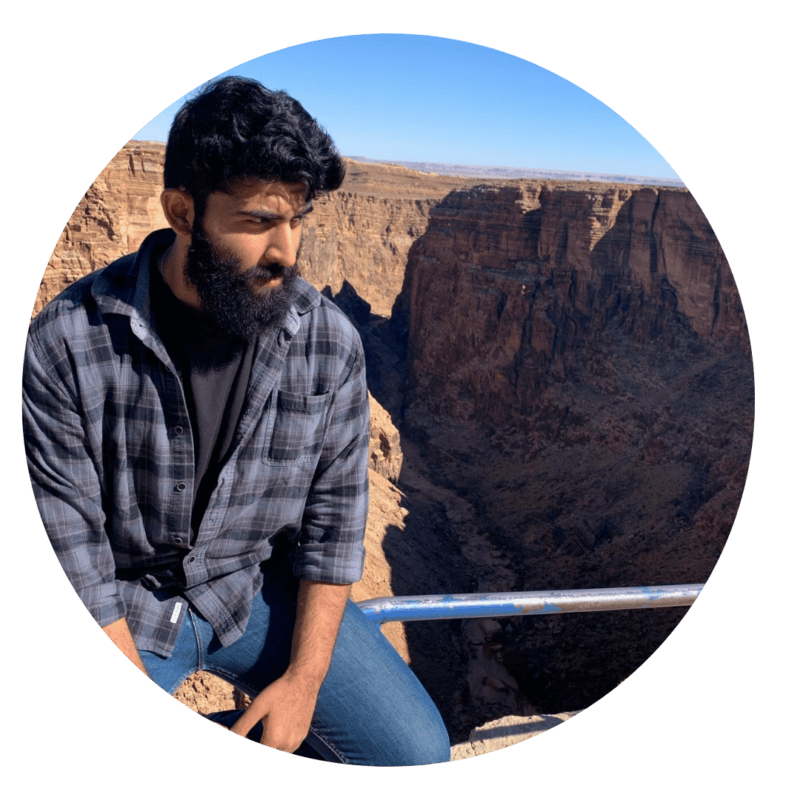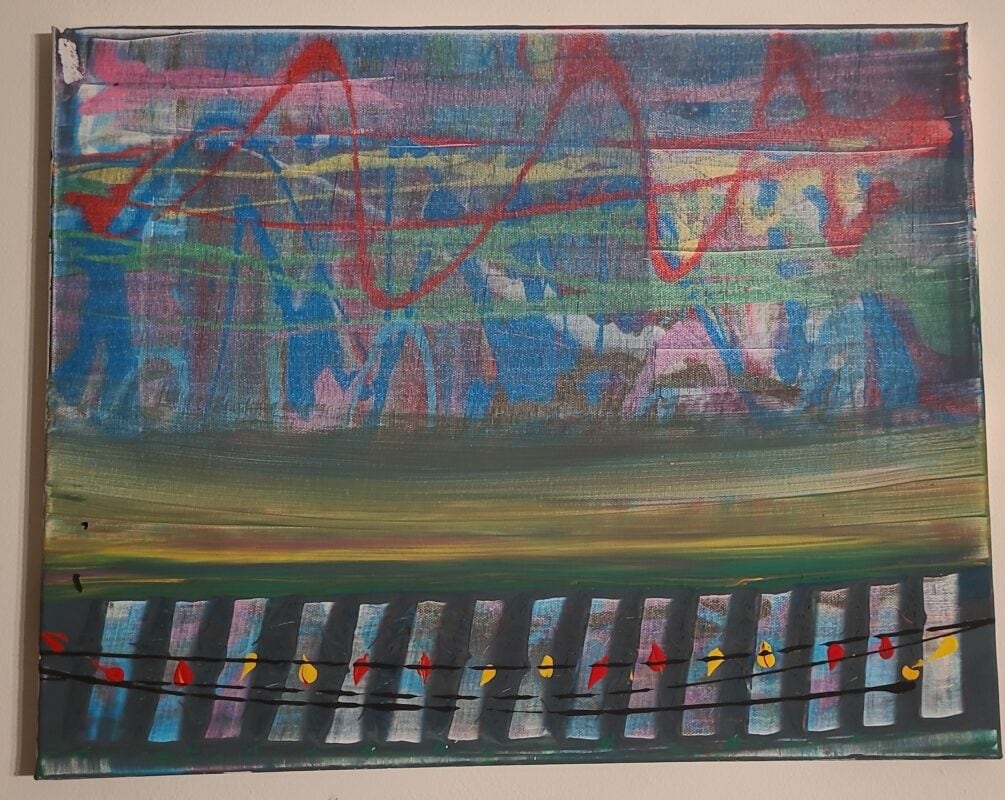
Instagram: @ibrahim.khalil_14
Ibrahim Khalil Awan is a multidisciplinary thinker whose background spans M&A valuation, quantum algorithms, and high energy density physics research. With a practice rooted in curiosity, internal reflection, and creative abstraction, Awan turns to painting as a vehicle for exploring the subconscious—an unpredictable terrain where intellect and instinct merge. His work lives at the intersection of mental depth and emotional spontaneity, often blurring the line between chaos and structure.
Awan’s unconventional path into the arts informs the unique conceptual DNA of his visual work. His paintings often begin as intuitive exercises—marks made without rigid intention—that later reveal a personal or symbolic order. Grounded in philosophical inquiry and a fascination with perception, his practice favors fluidity over definition. Whether working with paint, code, or thought, Awan’s aim remains the same: to illuminate the inner frameworks that guide, confound, and shape us.
Featured Artwork
Title: Metro
Medium: Water on canvas
Dimensions: 16 × 20 inches
Year: 2024
Price: $14,600 USD
Edition Type: Unique, 1 of 1

Metro is a visual meditation on frequency, rhythm, and subconscious movement. Painted using layered washes and intuitive mark-making, the work invites viewers into a liminal space where structured systems—like subway grids or musical bars—coexist with a dreamlike flux of color and form.
At the base of the composition, a series of vertical white strokes nod to transportation infrastructure, while a rhythmic row of red and yellow dots atop black lines suggests musical notation or transit signals. Above, the surface dissolves into chromatic turbulence: a tangled overlay of color washes and calligraphic swirls that seem to pulse with the energy of a crowd, a city, a mind in motion.
Though titled Metro, the piece resists literal interpretation. It is less a depiction of place and more a coded reflection of experience—an abstracted mental map of movement, emotion, and memory. Awan’s refusal to center a single focal point speaks to his thematic interest in multiplicity and layered perception. Metro becomes not just a representation, but a projection—a subconscious field rendered visible.
Exhibition Information
April 2025: “Urban Narratives: The City as Canvas”
Curated by: Fern Messa Joson
Theme: Turning the cityscape into a canvas, this exhibition captures the raw, vibrant energy of urban life through graffiti, street photography, painting, and more.
Exhibition Dates: April 3 – April 10, 2025
Opening Reception: Thursday, April 3 | 6 PM – 8 PM
Guided audio experience
For accessibility, the full video transcript is provided below for those who prefer to read or are unable to listen.
“Take a moment with this piece—Metro. Breathe. Let your eyes travel across the surface before trying to understand it. Ibrahim Khalil Awan invites us into a layered meditation on movement, memory, and the interior life of a city.
At first glance, the painting feels electric. In the upper half, streaks of red, blue, and green loop and twist like pulsing signals—like soundwaves mid-transmission. They stretch and curl across a shifting background that flickers with light and interference, much like the inner hum of a subway car or the blurred impressions we gather through a rain-speckled window. There’s a kinetic language here—one that suggests energy moving faster than thought.
But the painting is not chaos. Look closely. There’s intention beneath the abstraction.
Moving downward, the color palette deepens into gradients of green and gold—almost like layers of compressed earth or a fading horizon beneath the noise. It feels quieter here. As if the painting is grounding itself after all the signal and static above.
And then, anchoring the composition at the base, comes structure: a rhythmic row of verticals—painted forms that resemble piano keys or platform pillars—beneath a staff of sweeping black lines dotted with vibrant red and yellow. Awan has taken the cadence of a train’s arrival or the beat of a city’s movement and translated it into visual music.
What’s beautiful is the ambiguity. Metro isn’t literal. It doesn’t give you a map or a direction—it offers a pulse. A pattern. A feeling.
This work speaks to the invisible systems that hold us: transit, technology, time.”